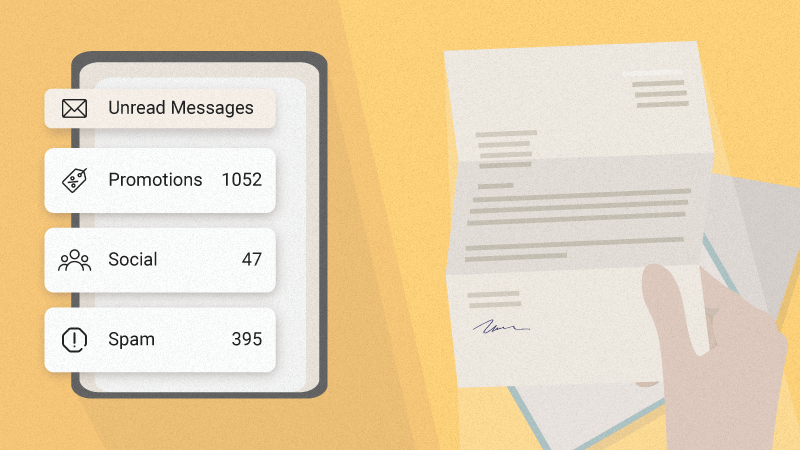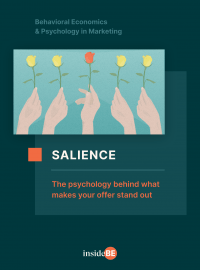How to Nail Your Communication by Using the Right Messenger

Has your well-crafted message not shown promising results? Chances are you have neglected the messenger. This article explores how different types of messengers can make your message more effective.
In this article, you’ll discover:
- Why crafting the perfect message is not enough;
- Different types of messengers and their importance; and
- How to choose the right messenger for your audience.
Have you ever asked someone else, perhaps a senior colleague, to get approval for a plan on your behalf? It wasn’t like they were going to present a different idea, you just felt like people would agree more easily when they were the person presenting it. Well, we’ve all been there!
Crafting perfect communication is important. However, the job does not end at hiring a UX writer to create the perfect message for your product or brand. For the message to have maximum impact and be interpreted in the right ways, the messenger delivering the message needs to be chosen carefully too.
We tend to be influenced by how a message is communicated to us, and decide how much importance we place on it depending on the source of that message. The feelings we attribute to a particular message are greatly influenced by how we perceive the messenger of that message.
So, who (or what) is the messenger, you ask?
It’s simply the carrier of the message. It can be thought of in 4 different ways:
1. The medium delivering the message (e.g. letter or email, print or digital)
The communication channels we use when delivering our message play a significant role in how our message is perceived – and in any final decision.
For example, the mere choice between conveying your message digitally versus using a physical medium (like print) can have a bigger impact than you may think, especially in areas concerning ease of processing information, memory, and brand recall. With the incidence of fake news on the rise, 56% of respondents in one survey said they considered printed sources more credible and trustworthy than digital counterparts. This is understandable, as print requires a lot more resources and expenses than digital. Our brain uses this knowledge as a signal to judge the importance and trustworthiness of the message. Similarly, a folder or a bag that is heavy seems to be more important and valuable to us.
It’s crucial to understand the kind of signal your chosen messenger is indirectly sending to your audience.

Discover ground-breaking ideas and fascinating solutions.
2. The physical product used to deliver the message (e.g. paper, box or envelope)
If you decide to deliver your message offline, through a physical product, extra points to you for saliency. But remember to think through the product experience as well, and how it makes the person receiving it feel.
Read this article to discover how Ogilvy used a higher quality paper and changed the location of the envelope flap to be used for charity donations, leading to an almost 10% increase in donations while simultaneously increasing the number of people who donated £100 or more.
Changing the flap from the longer side to the shorter one subconsciously made people believe their money was safer in the envelope. Using a higher quality paper for the communication made people aware of the higher costs incurred for the activity and instilled a greater desire to reciprocate by donating to the charity. If all these interventions were rolled out across the campaign, it would have resulted in an increase of more than half a million pounds in donations.
When you’re thinking about the medium or the packaging of your product, think about what kind of emotions and actions you want your audience to exhibit when they receive the message.
The message to the people remained the same – a request to donate to charity. The messenger, however, was changed to address any inhibitions people might have in performing the desired behavior.
When you’re thinking about the medium or the packaging of your product, think about what kind of emotions and actions you want your audience to exhibit when they receive the message. Then, think about how you can modify the medium or packaging to invoke the same feelings and prompt them to take relevant action.
3. The authority or expertise of the person delivering the message (e.g. CEO, doctor, lawyer, celebrity)
We are required to make a million decisions in our everyday life. It is relatively easy for a coffee enthusiast to choose what type of coffee beans they need to buy (medium-roast Arabica grown in South America, please!). However, choosing the right investment asset which suits their financial needs could be a nightmare for them, simply because they don’t consider themselves an expert. (NFTs? Cryptocurrency? Debt funds? Equity? Which one is the best option?)
This is the time we tend to look for advice from people who are experts, and who we can trust. This is referred to as Authority Bias in Behavioral Science.
Research conducted by Stanford professor Elizabeth Blankespoor highlights how CEO presentations at IPO Road Shows can significantly impact stock prices, even though the information presented is no different from what is available in the prospectus.
Feelings of trust and security associated with a person (e.g. family, friends)
Besides authority and expertise, behavioral and demographic similarities between the audience and the messenger can also improve the efficacy of the message. This becomes even more relevant when the audience belongs to a lower socioeconomic group.
In situations when people are prone to ignore authority, children can surprisingly become the perfect messengers as they can trigger an emotional response in adults. Schoolchildren in London were able to convince adults to switch off their engines while picking up their kids outside the school, something an authoritative sign with a £40 fine was not able to do.
Did the message change? No. Did the messenger change? Yes.
There are also times when the nature of the message demands it to be delivered by evoking feelings of trust and safety. DFID recognized this and trained hairdressers in low-income areas of Zimbabwe in how to inform their clients of the benefits of female condoms, how they are used, and how to introduce them into a relationship. A familiar person in a friendly and safe environment helped overcome the stigma attached to female condoms and gave women a chance to talk about their personal issues freely. 28% of the respondents reported using the female condom, compared to 15% in 2002.
Did the message change? No. Did the messenger change? Yes.
Oftentimes, our decision to accept or reject a message is also dictated by our feelings towards the messenger.
Oftentimes, our decision to accept or reject a message is also dictated by our feelings towards the messenger. We may discard information or advice given to us by someone we dislike. For example, we may disagree with campaigns run by a political party we don’t support, although if it were presented by the political party we like, we would willingly extend our support.
As is the case with any behavior intervention, context becomes incredibly important in deciding what kind of messenger you should choose to derive maximum value from your thoughtfully curated message.
You first need to understand your audience and the kind of message you want to send. Based on that, ask yourself:
- Will my audience be more receptive to a messenger with authority or expertise? Or will bringing in someone more relatable have more impact?
- What demographic should the messenger display to have an impact on the audience? (People who are the same age as we are and/or have similar jobs and positions have more influence on us than people we cannot relate to at all)
- How can I make the messenger more likable? Do they display characteristics like trustworthiness, charisma, warmth, and vulnerability?
Key Takeaways:
- Give as much importance to choosing your messenger as your message. We tend to be influenced by how a message is communicated to us, and decide how much importance we give to the message depending on the source of that message.
- The messenger is the carrier of your message. It can be thought of as the medium (digital, print, email), physical (paper, packaging, envelope), person (family, friend), or position (CEO, doctor, lawyer).
- Choose your messenger carefully depending on the context and the emotions you want to evoke in your audience.




